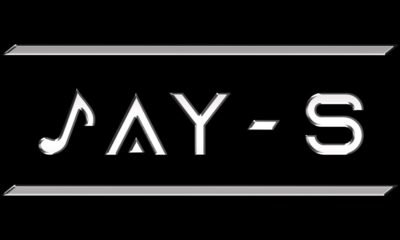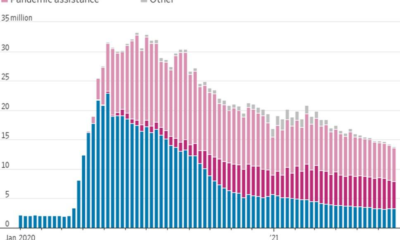Business
Underused housing tax – requirements and exemptions

The federal government’s new underused housing tax (UHT) may be aimed primarily at non-residents of Canada, but others may also be caught. Find out more about the UHT and when it applies.
Updated to include a link to form UHT-2900, Underused Housing Tax Return and Election Form as well as other new information published by the Canada Revenue Agency.
February 9, 2023 – Updated to include new information provided by the Canada Revenue Agency included in the publication in Underused Housing Tax Notices 6 to 11. Also adds a new section, “Partnership versus co-ownership considerations”.
In Budget 2021, the federal government announced plans for an annual one per cent tax on the value of residential real estate that is:
owned by any non-resident, non-Canadian, and,
considered vacant or underused.
The UHT Act was enacted on June 9, 2022, with effect from January 1, 2022. While the budget suggested that only non-residents would be affected, the scope of the final legislation is broader, as we explain later in this blog. For example, where a property is held in trust for Canadian resident beneficiaries, there may be a requirement to file a return (form UHT-2900, Underused Housing Tax Return and Election Form) even though no non-residents have an interest in the property and no tax is payable.
In this blog, we highlight the UHT’s key elements and answer some top questions you might have about the new tax. See also the Canada Revenue Agency (CRA)’s new UHT webpage, which includes the new UHT return, technical guidance and other information, and which, as we understand, the CRA will update with new information going forward. We will update this tax blog when new information is provided, and we will alert you regarding these updates via our Canadian Tax News page.
Finally, this blog only covers the national UHT. Some provinces and municipalities impose similar vacancy taxes, and you should review these rules also if you or your client has affected properties in these locations.
WHAT IS THE UHT?
The UHT is intended to apply to underused housing in Canada owned directly or indirectly and wholly or partly by non-resident, non-Canadians. UHT obligations apply for calendar years (beginning with 2022) to affected owners of residential property1 in Canada on December 31 of the relevant year.
The UHT rules have two requirements: an annual reporting requirement and, for some of these filers, a tax liability for UHT. The tax is calculated by multiplying the residential property’s value by the 1 per cent tax rate. It must be paid to the CRA by April 30 of the following calendar year, when the annual return is also due.
The UHT rules categorize owners of residential property in three broad groups:
owners with no UHT reporting or tax obligation (referred to in the UHT legislation as “excluded owners”)
owners required file the UHT return and pay tax (referred to by the CRA in their guidance as “affected owners”)
owners required to file the UHT return but with no tax payable (also “affected owners”)
Which owners are excluded?
Excluded owners who are exempt from any UHT obligations include (as of December 31 of a calendar year):
individual Canadian citizens or permanent residents2 of Canada (“Canadian individuals”), unless they would be exempt as an owner in their capacity as a trustee or partner (excluding personal representatives of a deceased individual)
publicly traded Canadian corporations
persons with title to property in their capacity as a trustee of a mutual fund trust, real estate investment trust or specified investment flow-through trust (SIFT)
registered charities
cooperative housing corporations
municipal organizations and other public institutions and government bodies
an Indigenous governing body or a corporation
“prescribed persons” (not yet defined by regulation at the time of writing)
Which owners must file the UHT return and pay the tax?
Affected owners of residential property who must file a return and pay the tax include:
individuals who are not Canadian citizens or permanent residents who do not qualify for an exemption
private corporations, including Canadian controlled private corporations (CCPC), partnerships and trusts (other than estates) that own3 residential property in Canada and are not eligible for an exemption
Which owners must file the UHT return but are exempt from the tax?
This subset of affected owners is generally eligible for one of the available exemptions, but they still need to file the annual return to claim the exemption for a calendar year.
WHAT ARE THE EXEMPTIONS?
Affected owners must first determine whether they qualify for one of the following exemptions from the tax. If they do not, the UHT will be payable.
Exemptions based on qualifying occupancy
An owner of a residential property may be exempt for a calendar year in the following situations.
Primary place of residence – The residential property is the primary place of residence of:
the owner or their spouse or common-law partner (referred to as “spouse” in this blog), or
a child of the owner or owner’s spouse who occupies the residential property for authorized study at a designated learning institution.
Qualifying occupants – The residential property is occupied by one or more qualifying occupants in relation to the owner for at least 180 days of the year (counting only the days of the qualifying occupancy period in the year).
Primary place of residence
The CRA’s UHT Notice 6 Exemption for Primary Place of Residence provides guidance on how to determine whether a residence will be considered the primary place of residence for UHT purposes.
The CRA indicates that where an owner has more than one place of residence, the place of residence that is first in order of importance to the owner is their primary place of residence. A place of residence that is not first in order of importance to them is a secondary place of residence. In addition, if the owner is not a citizen or a permanent resident of Canada and their primary place of residence is outside Canada, any residential property that they own in Canada is generally considered to be a secondary place of residence, unless it can be proved otherwise. The CRA notes that while there is some similarity to the term principal residence used under the Income Tax Act, the determination of whether a home is a principal residence is not necessarily an indicator of whether a residential property is an individual’s primary place of residence for purposes of the UHT.
Finally, the CRA states that their guidelines and criteria under the goods and services tax/harmonized sales tax (GST/HST) to determine whether an individual’s residence is their primary place of residence may be used for the underused housing tax.
Qualifying occupants
A qualifying occupancy period means a period of at least one month in the calendar year during which a qualifying occupant continuously occupies a dwelling unit that is part of the residential property.
In UHT Notice 7, Exemption for Qualifying Occupancy, in general, if an individual has the right to occupy a dwelling unit for a period on a continuous basis (that is, without interruption throughout the period), the individual has continuous occupancy of the dwelling unit for the period.
An individual’s continuous occupancy for a period is not necessarily interrupted by the individual’s physical absence from the dwelling unit at a time in the period if both of the following apply:
the individual still has the right to occupy the dwelling unit throughout their physical absence
the right to occupy the dwelling unit is not given to another individual for any period during the physical absence
The CRA indicates that their guidelines and criteria under the GST/HST to determine whether an individual has continuous occupancy of real property will be used for the UHT.
The CRA states that each affected owner of a residential property must separately determine whether they have one or more qualifying occupancy periods for their ownership of the residential property. A qualifying occupant in relation to the owner includes:
an arm’s length tenant, under a written agreement
a non-arm’s length tenant who is given continuous occupancy of the dwelling unit under a written agreement for a fair amount of rent4
an individual owner or their spouse who is in Canada to pursue authorized work under a Canadian work permit and who occupies the dwelling unit for that purpose
a spouse, parent or child of the owner who is a citizen or permanent resident
Multiple residential properties
If either (or both) the owner and their spouse own multiple residential properties, their ownership may not qualify for the exemptions for either primary place of residence or qualifying occupancy unless they file an election with the CRA to designate only one property to qualify for the primary residence exemption or to be considered for the qualifying occupancy exemption. The election is included in Section 3 of the UHT return and must be filed by April 30 of the following year. Where the owners own the property jointly, they must also make the election jointly. Only one election for a calendar year can be made by the owner and their spouse, and they can only designate one residential property in the election. An owner and their spouse cannot designate different residential properties for the two exemptions.
Where an owner or their spouse elect to designate one of the multiple properties as a primary residence, they cannot be qualifying occupants of any other properties they may own.
Exemptions based on a property’s limited availability
An exemption may be allowed if the residential property’s availability is limited for any of the following reasons.
Limited seasonal access – The property is not a suitable residence year-round or not accessible during part of the year.
Disaster or hazardous condition – The property is uninhabitable for at least 60 consecutive days in the calendar year due to as disaster or hazard caused by circumstances beyond the owner’s reasonable control, and the property was not exempt in a previous year for the same reasons.
Renovation – The property qualifies for the exemption for residential properties that are uninhabitable for at least 120 consecutive days in the calendar year due to a renovation done without unreasonable delay, and the property was not exempt in a previous year for the same reasons.
Under construction – The property was not substantially completed (generally, 90 per cent or more) before April of the calendar year, or it was substantially completed in January, February or March, offered for sale to the public during the year, but never occupied by an individual.
Year of acquisition – The owner first acquired the residential property during the year and did not own the same property during any of the nine preceding years.
Exemption based on type of owner
The following types of owners are exempt from UHT:
deceased owners and their personal representatives (exempt in the year of owner’s death of the owner or the following year)
surviving joint owners with at least 25 per cent interest in the property (exempt in the year of the deceased owner’s death)
specified Canadian corporations, which are generally Canadian corporations having less than 10 per cent of their votes or equity value owned by foreign individuals or corporations
persons who own the property solely in their capacity as a partner of a specified Canadian partnership, which is one that has, on December 31, only excluded owners or specified Canadian corporation as partners
a person who owns residential property solely in their capacity as a trustee of a specified Canadian trust, which is a trust that owns a residential property where each beneficiary with an interest in the property is, on December 31, an excluded owner or specified Canadian corporation.
Exemption based on prescribed area and condition or person
Recreational and other properties in less densely populated areas may be exempt from the UHT if the residential property is:
located in a prescribed area of Canada, and
used personally by the owner, the owner’s spouse or both for at least 28 days during the calendar year.
You can find out whether a residential property is in a prescribed area of Canada using the CRA’s Underused housing tax vacation property designation tool. The determination is based on periodically updated census data, so you should check whether an area qualifies as a prescribed area for UHT purposes each year.
Finally, “prescribed persons” are also exempt under the UHT legislation, but no regulatory definition of this term has been released to date.
HOW IS THE UHT CALCULATED?
The UHT formula is one per cent of the property’s value multiplied by that person’s ownership percentage. Where property is held jointly (i.e. no percentage is listed in the land registry), the ownership percentage is based on the number of owners.
There are two ways to determine the value of a residential property:
Taxable value, which is the greater of:
the assessed tax value for the year under the related property tax assessment, and
the most recent sale price on or before December 31 of the calendar year, or
Fair market value, which can be used if the owner files an election with the CRA to use that method for the property (the election is included on form UHT-2900).
Note that where the tax is not based on the most recent sale price, that price is still required to be disclosed on the form. Also, it should be kept in mind that the form requires the disclosure of the owners who own 10 per cent or more of the property and their ownership percentage.
To elect to use fair market value, the CRA states that the owner must get a written appraisal report for the property prepared by an accredited member of the Appraisal Institute of Canada (or a comparable body), operating at arm’s length from the owner.
Business
Nine Restaurant Franchise Goes Global with $120 Million Crypto Crowdfunding Joint Venture, Led by Adnan Ashraf

Adnan Ashraf, a multifaceted entrepreneur with interests spanning pharmaceuticals, technology, and real estate, is embarking on an exciting new venture to expand the renowned Nine restaurant brand into a global franchise. With its reputation for upscale Japanese cuisine and stunning panoramic views, Nine has captured the attention of discerning diners worldwide, and Mr. Ashraf aims to bring this exceptional dining experience to numerous locations across the globe.
To realize his ambitious expansion plans, Mr. Ashraf has engaged in discussions with a pioneering crypto crowdfunding platform, forging a strategic partnership for a joint venture involving 100 stores with an estimated investment of $120 million. Harnessing the power of cryptocurrency, Mr. Ashraf intends to expedite the growth of the Nine franchise and achieve his objectives more efficiently.
The first milestone in this expansion journey involves acquiring a prime waterfront location in Canary Wharf, a prestigious business district in London. Serving as the flagship Nine restaurant, this iconic setting will exemplify the brand’s exquisite cuisine and offer guests unparalleled views. Mr. Ashraf’s vision extends beyond this initial location, as he plans to continue expanding into other prime spots in London and beyond, introducing the Nine dining experience to cosmopolitan cities worldwide.
By partnering with a cryptocurrency crowdfunding platform, Mr. Ashraf aims to tap into the immense potential of this innovative funding mechanism. Cryptocurrency not only streamlines the investment process but also attracts a global community of investors passionate about supporting groundbreaking ventures in the hospitality industry. This collaboration is expected to fuel the rapid expansion of the Nine franchise, ensuring that more diners can savor its exceptional culinary offerings and immerse themselves in the extraordinary ambiance that defines the brand.
Drawing on his extensive entrepreneurial experience, Adnan Ashraf brings a wealth of expertise to this venture. His track record of success across various sectors attests to his ability to navigate complex business landscapes and identify unique opportunities for growth. With his diverse business interests and unwavering commitment to excellence, Mr. Ashraf is poised to spearhead the global expansion of the Nine restaurant brand, establishing a network of exceptional dining establishments worldwide.
Business
Alliance Rental: Alexey Ivanov Latest Venture in Luxury Transport by Alliance Trucks

Alliance Trucks, the leading Japanese and Korean car dealer in Russia, is proud to announce the launch of its new luxury transport rental aggregator, Alliance Rental. The project is the brainchild of Alexey Ivanov, the CEO and owner of Alliance Trucks, a successful businessman, traveler, and blogger. With over 59 countries visited, Alexey Ivanov has gained valuable experience in the automotive industry, which he has leveraged to create Alliance Trucks, a company that generates a trade revenue of $50 million annually.
Founded in 2014, Alliance Trucks has become the biggest Japanese and Korean car dealer in Russia, with four authorized and certified workshops, warehouses in the capital, and numerous certificates of first dealer with top-rated sales and service quality. The company’s mechanic team has won different national and international competitions of professional skills, including the ISUZU GRAN PRIX, where they were the first Russian and second in the world.
Alexey Ivanov’s awareness and commitment to 10 corporate rules have enabled Alliance Trucks to achieve its current status as a respected and reputable brand in the automotive industry. The rules include prioritizing emotional intelligence, respecting corporate culture and business ethics, seeking opportunities for growth in every crisis, and being socially active and engaged in charitable projects.
Alliance Parts, Alexey Ivanov’s latest venture, is a cars and spare parts distribution business in the United Arab Emirates with a global partnership with different car brands. The company leverages Alexey’s life and professional experience to scale similar projects in different market areas.
Alliance Rental is Alexey Ivanov’s latest project, an aggregator that offers a one-stop-shop for luxury transport rentals. The project’s main idea is to provide all the luxury transport rentals that customers may need for emotional holidays, celebrations, dream realization, business meetings, or just for premium lifestyle in one mobile application.
The application, marketing brand, and all business processes are complete, and legal compliance with local laws, rules, and regulations is under process.
Alliance Rental offers taxi Rolls-Royce, luxury sport cars, yachts, helicopters, and aircraft rentals. Partnerships with operators of luxury services are currently being signed, and the project is ready to launch soon.
Alexey Ivanov’s mission is to make the world a better and cleaner place, live a long, bright, and memorable life, create a family, raise children, create and invent something that deeply touches the feelings of people, be a mentor, teach knowledge, and leave a significant mark in history, society, and culture.
For more information on Alliance Rental and Alexey Ivanov, follow him on Instagram at @a.a.ivanov
Business
Januthan Logathas: A video and photography professional who seeks to leave his name among the best in this area

JANUTHAN LOGATHAS was born in a small town in Switzerland and is the son of a Tamil couple from Sri Lanka. His father was the one who began to inspire him to become a video and photography professional, which is why he is currently widely recognized as well as having followed in the footsteps of his father who also worked in this profession. With time people started noticing his Instagram modeling shoots and he became very prominent among European Tamils.
His tik tok videos also boosted his image and recognition a lot as they were filled with a subtle humor that was very pleasing to his followers who were part of Januthan reaching a much larger audience.
People celebrated the German/Albanian co-worker combo in a peculiar way.
In addition, he was also the first Tamil photographer to win the renowned award for the best wedding photography from Radisson in Europe, he gained great popularity especially with the collaboration with Usha Jay in her dance video which achieved many views and this made his audience grow exponentially.

He knows that in order to continue growing in what he does, he must continue working very hard as he has done up to now, and all this with the aim of increasing his public and the quality of his work, and for this it is necessary to continue going through this long learning process in the one that advances a little more every day to reach the desired objective that is to position its name among one of the best in the video and photography industry. In his social networks you can find a lot of material about his work in addition to him also seeing content about his future works which are more than promising
To grow in this industry, you must continue to constantly learn, since this industry is very competitive and only those who know how to implement their ideas and creativity very well when creating new jobs stand out.
Unveiling Life Through the Lens: Explore the captivating world of talented photographer @jpresidento on Instagram and TikTok, as he captures unique moments that have earned him accolades at the Wedisson Awards. Discover his visually mesmerizing art at these links!
-

 Business3 years ago
Business3 years agoHyundai Leads Industry in U.S. News & World Report 2023 Best Cars for the Money Awards
-

 Innovation3 years ago
Innovation3 years agoJay-S ventures into the urban genre with “Bailar en la Playa” his latest production
-

 Business3 years ago
Business3 years agoThree Questions Small Business Owners Should Ask In Creating A Workplace Culture – Forbes
-

 Business3 years ago
Business3 years agoA Fintech Makes It Easy For Small Businesses To Offer 401(k) Retirement Benefits – Forbes
-

 Business3 years ago
Business3 years agoBritain’s Small Businesses See Better Times Ahead But Is Their Optimism Justified? – Forbes
-

 Money3 years ago
Money3 years agoCharlie Crist leads Democratic gubernatorial field again in money chase – Florida Politics
-

 Money3 years ago
Money3 years agoTesting New Tools for Horizon Worlds Creators To Earn Money
-

 Business3 years ago
Business3 years agoSmall Business Labor Shortage – Forbes
